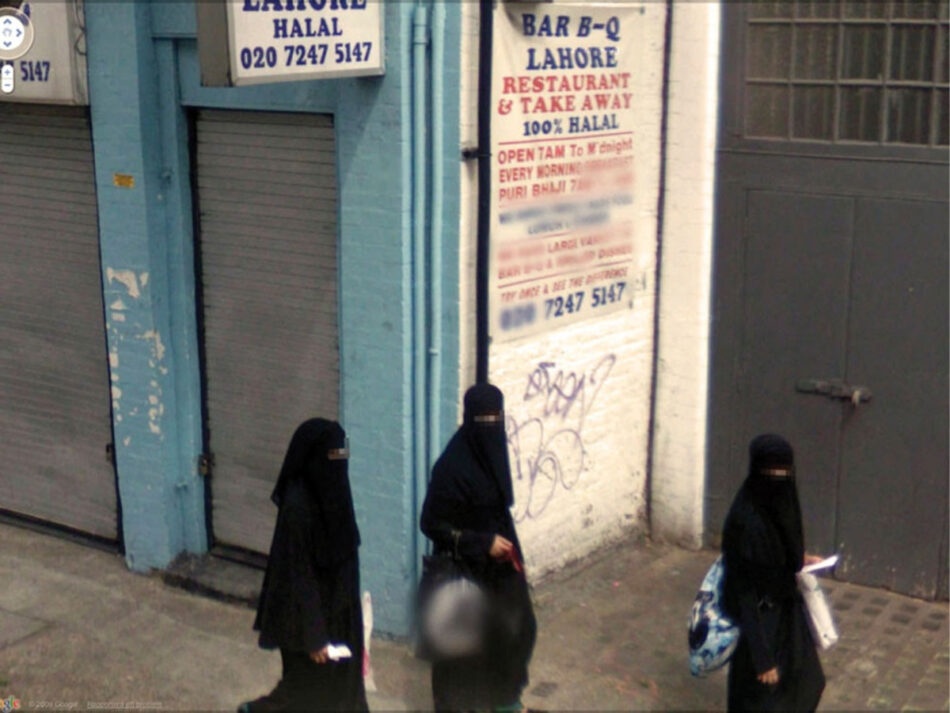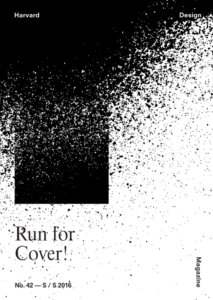Who’s Afraid of the Covered Face?
It is difficult to imagine anywhere in contemporary society where the concealment of the face in public does not trigger suspicion, if not outright scorn or legal consequences. However, for all the discussion about security and surveillance across various fields of study, the face remains an underemphasized aspect of how space is ordered through the accumulation and circulation of images. In the age of hypervisibility, the face has been overlooked as a battleground.
Regimes of micro-surveillance have advanced enormously since Jean Baudrillard declared the end of the “absolute gaze” in panoptic systems. Today, facial recognition systems (FRSs) are dusted across physical and digital landscapes, embedded in smartphones and even military goggles. FRSs do not rely on a person’s active cooperation; tacit participation suffices. However, the ubiquity of these biometric tools do not explain how the unconcealed face has come to be treated as a de facto mode for establishing truth or an empathic human connection.
“Sight and seeing, which in the Western tradition once epitomized intelligibility, have turned into a trap, the means whereby, in social space, diversity may be simulated and a travesty of enlightenment and intelligibility ensconced under the sign of transparency,” declares Henri Lefebvre in The Production of Space. The covered face resists the unwritten regimes of transparency (i.e., how in Western societies the open face is assumed to be the outward evidence of inner truth). As our environment is being rapidly equipped to survey us for various ends—through what technologists call “affective interfaces”—the nonrepresentational, private micro-territory of the covered face induces ever more fear by refusing signification.

A Google Street View image frames three unidentified Muslim women in niqab standing on a street corner somewhere in Britain. They are photographed from an inhuman angle, caught frozen in the cold stare of the roving, car-mounted Google camera. The women’s uniform black dress and position at the center of the photo enhances their appearance as a trio, a multi-cellular presence.
The photo irresistibly produces Walter Benjamin’s famed dialectical image. But rather than just two objects opposing each other in commodified or historical terms, it overrides the general sense of passive inevitability or grumbling dystopia about public surveillance. The Street View image seems to respond, albeit unintentionally, to Google’s informal corporate motto, “Don’t be evil.” In short, it appears to have a point of view. For Benjamin, the photographic object irrevocably changed everything it touched. An image of rubble or trash could transform “everything abject about poverty . . . into an object of pleasure.” Here, in the encounter between the resisting surface of the covered face and the errant gaze of a robotic eye, we encounter a breakdown in the process of transformation—a glitch.
“I’ve just seen a face, I can’t forget the time or place,” John Lennon and Paul McCartney sang. Now the opposite is true: the time and place are time-stamped with expert cartographic tools. The face resists the scan.
Maryam Monalisa Gharavi is an artist, poet, and theorist. Her work explores the interplay between aesthetic and political valences in the public domain. Forthcoming books include American Letters and a translation of Waly Salomão’s Algaravias: Echo Chamber. In 2014–2015 she was a postdoctoral Fulbright Fellow and Visiting Professor at Birzeit University, West Bank, and is currently Lecturer at Harvard University.
